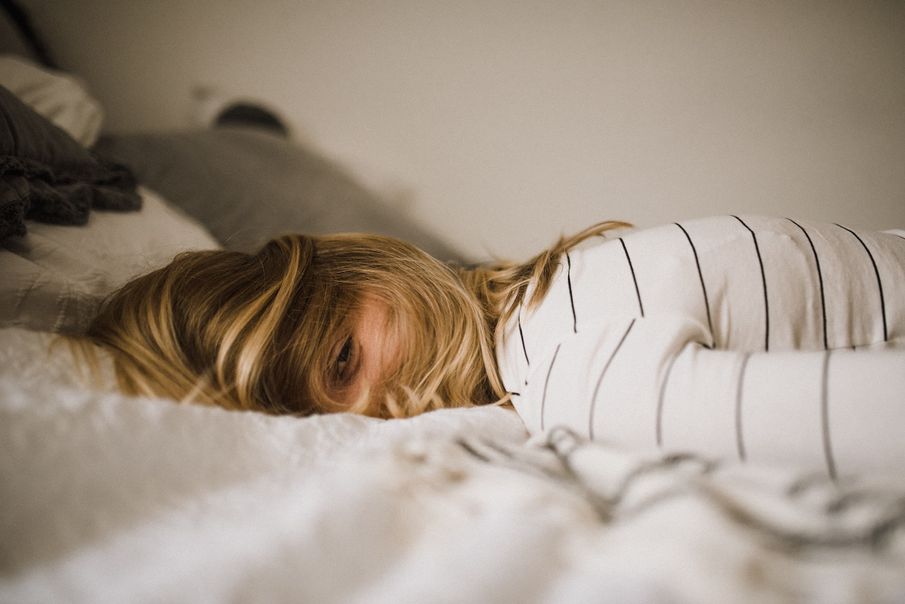With many people experiencing painful periods, we take a look at some of the natural ways you can manage your symptoms
Over half of people who menstruate experience painful periods. This can accompany other symptoms pre-period (known as pre-menstrual syndrome), last for one or two days or, for some, the whole duration of their bleed. Although for many people there might not be a complete cure for their pain, there are things that can be done to minimise its impact on day-to-day life.
Menstrual cramps are a very common symptom of periods. These occur when the uterus contracts and sheds its lining. Women often experience discomfort in their lower abdomen, back or groin but, for some people, the pain can be chronic and debilitating.
What causes painful periods?
There are a number of reasons why someone might have period pain. If you are experiencing painful menstruation, it’s important to speak to your GP as they will be able to help you understand why you’re experiencing this and provide answers with a diagnosis. This can go a long way to managing your periods effectively.
Some reasons why you might have painful periods include:
- ovarian cysts
- endometriosis
- PID (pelvic inflammatory disease)
- fibroids
- PMDD (premenstrual dysphoric disorder)
- adenomyosis
- having a copper IUD
How to relieve period pain
When we experience pain, it can be easy to reach for over-the-counter medicines, like paracetamol and ibuprofen. Doctors can prescribe stronger painkillers but there are other remedies that you can try for those wanting to take a more natural approach.
1. Heat
Applying heat can help the muscles relax and reduce cramps. You can do this by using a heat pad or a hot water bottle but be sure to wrap it up in a towel to prevent burns. Never apply the heat directly to the skin. Having a warm bath or shower is another way you can stimulate the relaxation of the muscles.
Patches are another alternative to hot water bottles or heat pads. They are great for on-the-go comfort, plus they are discrete and convenient. Why not give these cruelty-free and natural patches from BeYou a try?
2. Massage
Massaging your abdomen can help relieve period pain by relaxing the uterus and reducing spasms. For the best results, focus on massaging in circular motions in the area of pain itself. A full body massage, however, may be beneficial in reducing any stress and discomfort from your menstrual symptoms.
3. Relaxation techniques
Stress has been known to increase period pain, so trying to be as relaxed as possible during your period can help significantly when it comes to cramping. To help the body relax, you could try therapies such as Yoga, Pilates or reflexology. Not only are they a great way to release tension and distract you from any pain, but they are also great forms of exercise.
4. Exercise
For those suffering from period pain, it’s easy to find comfort in curling up in bed or on the sofa and making time for self-care. Exercising may be the last thing you feel like doing when in pain, but doing some light walking or going for a swim can be gentle ways to encourage movement in your body and reduce cramping.
5. Food and drinks
What you consume can help relieve some of the symptoms of menstruation, including painful cramps. Bloating can exacerbate period pain and cause further discomfort. Drinking plenty of water can help reduce bloating and, if you want to go one step further, hot water will help aid the relaxation of your stomach muscles. Herbal teas such as chamomile, ginger, or fennel can not only ease pain but can help with other symptoms associated with menstruation, such as trouble sleeping. If you prefer a traditional brew, be sure to avoid caffeine and opt for decaf tea and coffee.
Eating anti-inflammatory foods such as berries, tomatoes, pineapple, spices, leafy greens and oily fish can help to reduce bloating and muscle cramps. These foods are rich in prostaglandin, which is a group of hormone-like substances that are produced at inflammatory sites in the body. They work to control inflammation, blood clots and blood flow when the body is ill or injured.
In this video, we discuss how nutrition can help ease the symptoms of PMT.
Menstruation can be a difficult time for many women. It can often have a knock-on effect on mood, and energy and impact plans for daily life. It’s important to take time for yourself during your period; prioritise self-care and allow yourself space to relax and unwind.
If you’d like to learn more about how holistic therapies can help you through your period, you can reach out to a professional on Therapy Directory. For more information on how you can support your body through menstruation with nutrition, visit Nutritionist Resource.


Comments